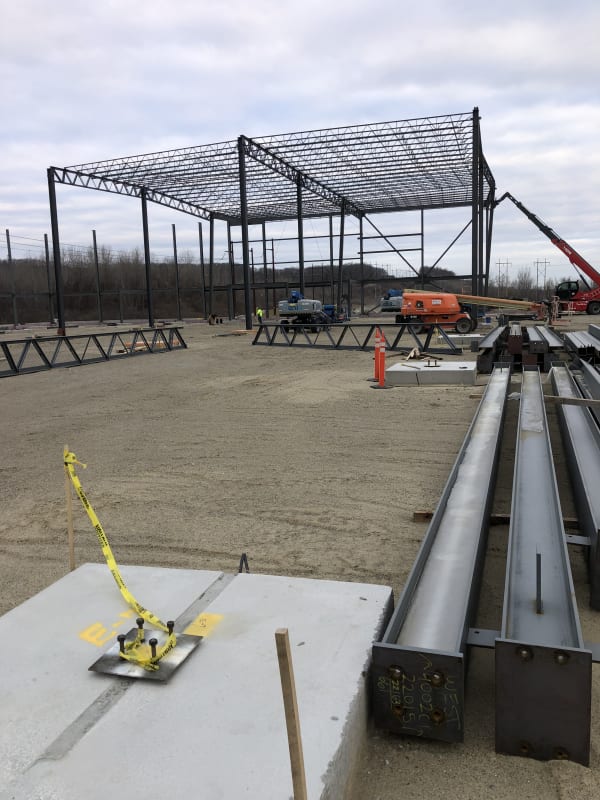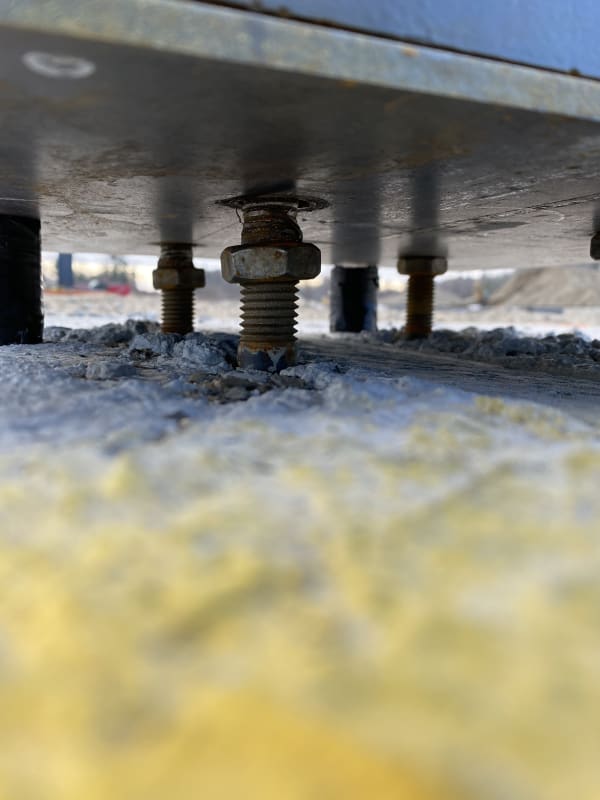I received a call this morning from a site this morning in regards to a building that is currently in the erection phase. The building is a warehouse utilizing open-web steel joists and joist girders with wide flange columns and bolts cast into concrete (4-3/4" dia ASTM F1554 Gr 36 (edited from 46) bolts in a 5" ga pattern). The detail we are using requires the use of a leveling plate an grout in the final configuration.
Due to cold temperatures, the GC is saying that they were not able to place the grout under the columns prior to steel erection, so they elected to use leveling nuts (which I just found out are only 1/2 the thickness of regular nuts... at least that is what I have been told). When the GC left the project last week everything was fine, then storms came in and not they have a group of columns that are no longer plumb (saying that they are not leaning considerably at the top (I don't recall if they said 3 feet or 3 inches).
The GC is saying that something stripped under the base plate (bolts or nuts). It sounds to me like the erector didn't brace the building properly (We went around about this a few times before I got off that ride as the GC insisted that everything was braced correctly). In the end, there is damage somewhere and I am not exactly sure where.
Two questions:
Has anyone run into this issue before (leveling nuts stripping)?
How do you fix the issue?
I am thinking they will need to plumb the building again and then the will need to install new post-installed bolts (not going to be easy). However, I am not sure if we should be having them do additional work.
Due to cold temperatures, the GC is saying that they were not able to place the grout under the columns prior to steel erection, so they elected to use leveling nuts (which I just found out are only 1/2 the thickness of regular nuts... at least that is what I have been told). When the GC left the project last week everything was fine, then storms came in and not they have a group of columns that are no longer plumb (saying that they are not leaning considerably at the top (I don't recall if they said 3 feet or 3 inches).
The GC is saying that something stripped under the base plate (bolts or nuts). It sounds to me like the erector didn't brace the building properly (We went around about this a few times before I got off that ride as the GC insisted that everything was braced correctly). In the end, there is damage somewhere and I am not exactly sure where.
Two questions:
Has anyone run into this issue before (leveling nuts stripping)?
How do you fix the issue?
I am thinking they will need to plumb the building again and then the will need to install new post-installed bolts (not going to be easy). However, I am not sure if we should be having them do additional work.



